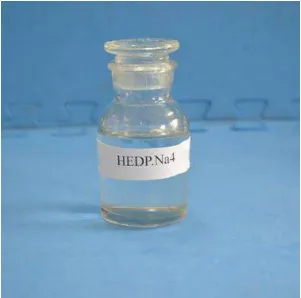Chloromethyl Isothiazolinone and Its Applications in Industrial and Consumer Products
Understanding Chloromethyl Isothiazolinone Uses, Risks, and Safety Measures
Chloromethyl isothiazolinone (CMIT) is a chemical compound that has garnered significant attention in various industries due to its fungicidal and bactericidal properties. Commonly used as a preservative in cosmetic, pharmaceutical, and industrial products, CMIT falls under the category of isothiazolinones, which are known for their effectiveness in preventing microbial growth. This article delves into the characteristics, uses, potential health risks, and safety measures associated with chloromethyl isothiazolinone.
Chemical Properties and Applications
Chloromethyl isothiazolinone is a colorless to pale yellow liquid with a mild, characteristic odor. As a potent biocide, it is widely utilized in a variety of formulations, including personal care products such as shampoos, lotions, and creams, as well as household products like cleaners and paints. In the industrial sector, it often finds its place in wood preservatives and coatings, offering crucial protection against bacteria, fungi, and algae.
The compound acts by disrupting cellular functions in microorganisms, effectively inhibiting their growth and reproduction. Its utility in formulations is noted especially when products are expected to have a long shelf life or when they are subjected to moisture, making CMIT a sought-after solution for manufacturers aiming to enhance product longevity.
Health Risks and Regulatory Concerns
Despite its effectiveness as a preservative, chloromethyl isothiazolinone poses potential health risks, particularly concerns about skin sensitization and allergic reactions. Studies have shown that CMIT can trigger allergic dermatitis in some individuals, leading to symptoms such as redness, itching, and inflammation upon skin contact. Moreover, inhalation of CMIT vapors can result in respiratory issues, especially in sensitive individuals.
Regulatory agencies around the world have started to impose stricter guidelines regarding the use of CMIT in consumer products. For instance, the European Union has placed restrictions on the allowable concentration of isothiazolinones in cosmetics, advocating for more robust labeling requirements to inform consumers of their presence. As public awareness of chemical safety increases, the demand for transparency and safer alternatives grows, pushing manufacturers to reconsider the use of such compounds.
chloromethyl isothiazolinone

Safety Measures and Recommendations
To mitigate the risks associated with chloromethyl isothiazolinone, both manufacturers and consumers can take proactive measures. For manufacturers, adopting Good Manufacturing Practices (GMP) is crucial. This includes thorough testing of the final product for allergenic potential and ensuring that the concentration of CMIT remains below regulatory limits.
On the consumer side, awareness is key. Individuals with sensitive skin or known allergies should carefully read labels and avoid products containing CMIT or similar preservatives. Using patch tests before fully incorporating a new product can also help gauge potential reactions.
Additionally, manufacturers are encouraged to explore alternative preservatives. Natural preservatives, such as essential oils and plant extracts, are gaining popularity as safer options that can provide antimicrobial properties without the health concerns associated with synthetic compounds.
Conclusion
Chloromethyl isothiazolinone remains a potent tool in the fight against microbial contamination in various products, offering long-lasting protection against unwanted growth. However, the associated health risks cannot be overlooked, and as regulations evolve, the industry is likely to witness a shift towards safer alternatives. Awareness and understanding of chemicals like CMIT are crucial for both manufacturers and consumers, driving the demand for more transparent and safer products in the market.
As we move forward, striking a balance between product efficacy and safety will be paramount. Continuous research and dialogue in the realm of chemical safety will pave the way for innovation and responsible usage in the products that we use daily, ensuring that consumer health remains a top priority.
-
Dodecyldimethylbenzylammonium Chloride: High-Purity DisinfectantNewsAug.30,2025
-
2-Phosphonobutane-1,2,4-Tricarboxylic Acid: Scale & CorrosionNewsAug.29,2025
-
Premium Isothiazolinones | Broad-Spectrum Biocidal SolutionsNewsAug.28,2025
-
LK-319 Special Scale And Corrosion Inhibitor For Steel Plants: Advanced Solutions for Industrial Water SystemsNewsAug.22,2025
-
Flocculant Water Treatment: Essential Chemical Solutions for Purification ProcessesNewsAug.22,2025
-
Isothiazolinones: Versatile Microbial Control Agents for Industrial and Consumer ApplicationsNewsAug.22,2025





